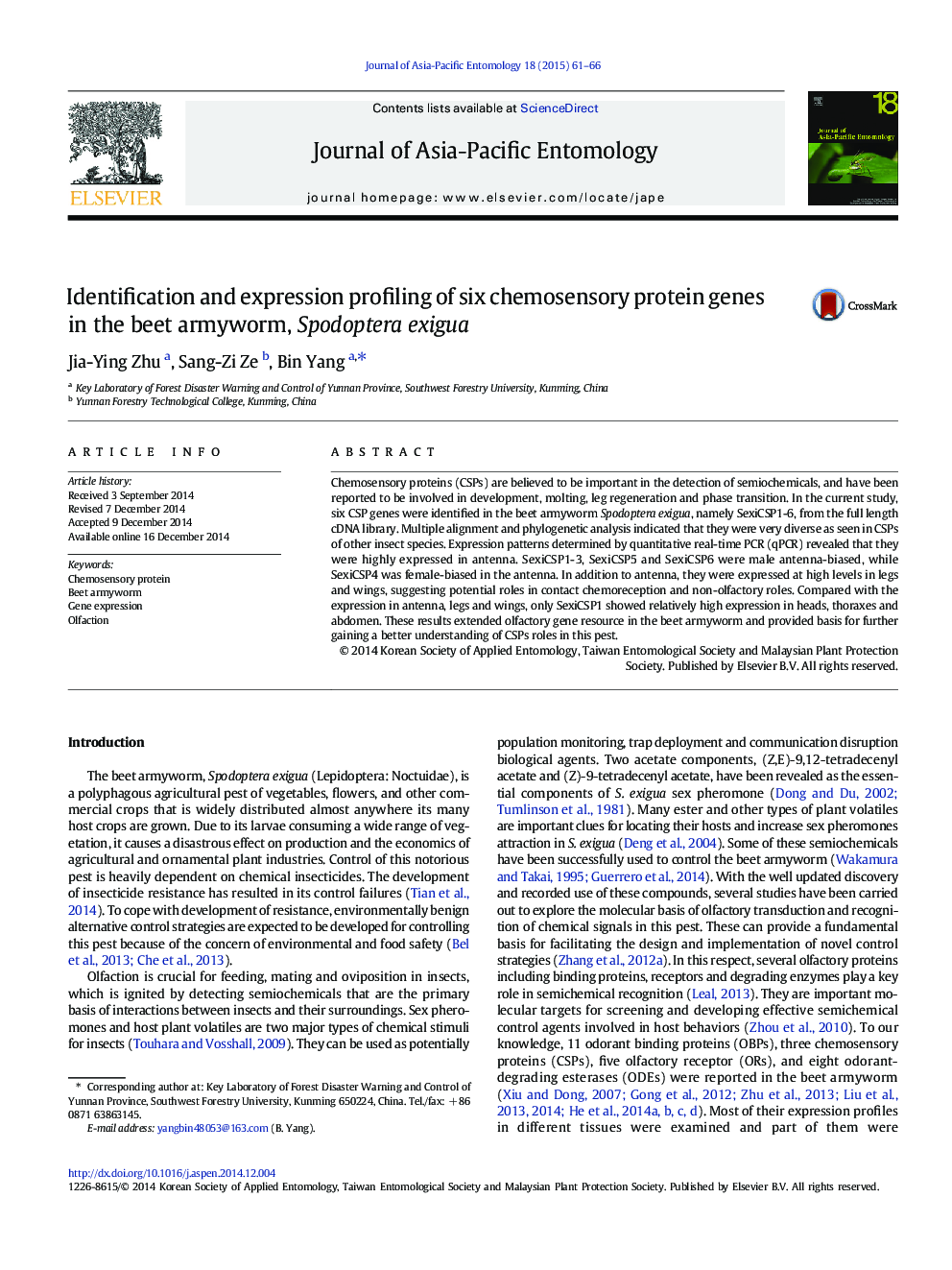| Article ID | Journal | Published Year | Pages | File Type |
|---|---|---|---|---|
| 4524627 | Journal of Asia-Pacific Entomology | 2015 | 6 Pages |
•Six CSP genes were identified in the beet armyworm.•Their transcripts were sex-biased and abundant in antenna.•High expression of them was detected in legs and wings.•Identified CSPs provide resources for understanding the olfactory molecular basis.
Chemosensory proteins (CSPs) are believed to be important in the detection of semiochemicals, and have been reported to be involved in development, molting, leg regeneration and phase transition. In the current study, six CSP genes were identified in the beet armyworm Spodoptera exigua, namely SexiCSP1-6, from the full length cDNA library. Multiple alignment and phylogenetic analysis indicated that they were very diverse as seen in CSPs of other insect species. Expression patterns determined by quantitative real-time PCR (qPCR) revealed that they were highly expressed in antenna. SexiCSP1-3, SexiCSP5 and SexiCSP6 were male antenna-biased, while SexiCSP4 was female-biased in the antenna. In addition to antenna, they were expressed at high levels in legs and wings, suggesting potential roles in contact chemoreception and non-olfactory roles. Compared with the expression in antenna, legs and wings, only SexiCSP1 showed relatively high expression in heads, thoraxes and abdomen. These results extended olfactory gene resource in the beet armyworm and provided basis for further gaining a better understanding of CSPs roles in this pest.
Graphical abstractFigure optionsDownload full-size imageDownload as PowerPoint slide
